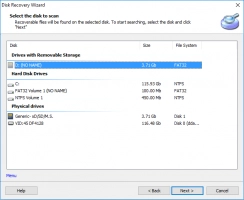Here is how to deal with Computer has rebooted from a bug-check issue
In this article you will find out:
- how to deal with this issue
- how to protect your data
Are you ready? Let's read!
About this issue
If an error like the Blue Screen of Death appears on the monitor screen, it should make you think that the computer may have rebooted from a bug-check. As a rule, the problem can arise after restarting your PC or laptop with Windows 10. The reason often lies in the incompatibility of your OS with newly installed drivers or devices. Let's figure out how to fix such an error to keep your PC running smoothly.
Let’s fix it
1. Make sure your data is safe!
To store data on external and internal devices without fear of their sudden disappearance from memory, you definitely need to have an information recovery application with you. The most important requirements for such a program should be efficient recovery and ease of use. Also, an ordinary user should not be confused by the moment when files or folders were deleted - due to a banal accidental deletion, power failures, or an attack of viruses and malware.
Professional recovery software does its job, regardless of the reasons for the loss of files. One of the most successful and advanced programs on the software market today is DiskInternals Partition Recovery.
After downloading from the official site and installation, a free demo version is available to the user, when using which you are sure to be a teacher of data recovery both on PC devices or laptops and on various external drives, for example, SSD, flash drive, external hard drive, memory cards, IDE disk, SATA disk, SCSI disk, etc. Not a problem if your OS uses a less common file system, DiskInternals Partition Recovery is used in many systems, such as HFS, NTFS, ReiserFS, APFS (reader mode), RomFS (reader mode), Reiser4, XFS, Ext2, Ext3, and Ext4, FAT, ReFS, UFS.


At the end of scanning the file system for recently deleted or damaged files and folders, you will definitely find the data that you need in a special preview tool. Are you satisfied with the result of the program and would like to return the data to your device? Purchase a license key to use all the features of Partition Recovery and no longer worry about the safety of your data on devices!
2. Use device manager
First of all, if you encounter a computer rebooted from a bug-check Windows 10 problem, remove the devices or drivers that were recently installed. To do this, follow the instructions below:
- Press the hotkey combination Win + R, the Run command will open.
- Next, type or copy the text devmgmt.msc in the Run line and click on the Ok tab. The Device Manager will start.
- In the Device Manager, search for the recently installed driver. Right-click on it and go to Uninstall Device.
- Close the Device Manager window and restart the OS.
If the installation of new additional equipment has taken place, you need to remove it from the OS. Also, don't forget to remove the device from Device Manager.
3. Work with drivers
Pay special attention to the timeliness of updating your drivers on your PC or laptop. To check the update status, follow the instructions step by step.
- Right-click on the Windows icon on the taskbar in the lower-left corner. Select the Device Manager tab.
- In the suggested directory, select the non-updated drivers, right-click on them and select the Update Driver tab.
To automatically search for drivers, click next to the corresponding action. If you already have the required driver on your device, be sure to specify the location of the driver on your device. After finishing the search and installing the latest driver, restart the OS and check if the problem with the computer has rebooted from a bug-check has been resolved.
4. Check the memory
Running a memory check on a PC or laptop will also help you get rid of the computer rebooted from a bug-check Windows 10. This is primarily due to a memory failure error. If the error is in it, the PC will automatically fix it. To do this, follow a series of simple steps.
- Press the Win and R keys at the same time to open the Run line.
- Type mdsched.exe in the search bar and press Enter.
- In the window that appears, click on the Restart Now tab to check for errors, or click on the Check for Problems tab when the PC restarts.
5. Is there any restore point available? Use Partition Recovery if not
An additional utility such as introducing a restore point will help you solve the problem with the computer was rebooted from a bug-check. You only need to enter a restore point in the search bar and click on Create a restore point in a new window. It remains only to click on the Restore tab.
To select a different restore point that was before the PC crashed, select it and click Next. After reading the warning message, click the Finish tab. Wait for the OS to roll back to the restore point when your PC was running normally. After completing the above steps, be sure to create a new restore point.


However, there are times when you cannot find the restore point you need or you have no restore points at all, use the Partition Recovery application. DiskInternals Partition Recovery is an expert program in restoring access to information on devices, as well as recovering files and folders that have been lost from the system for any reason.


